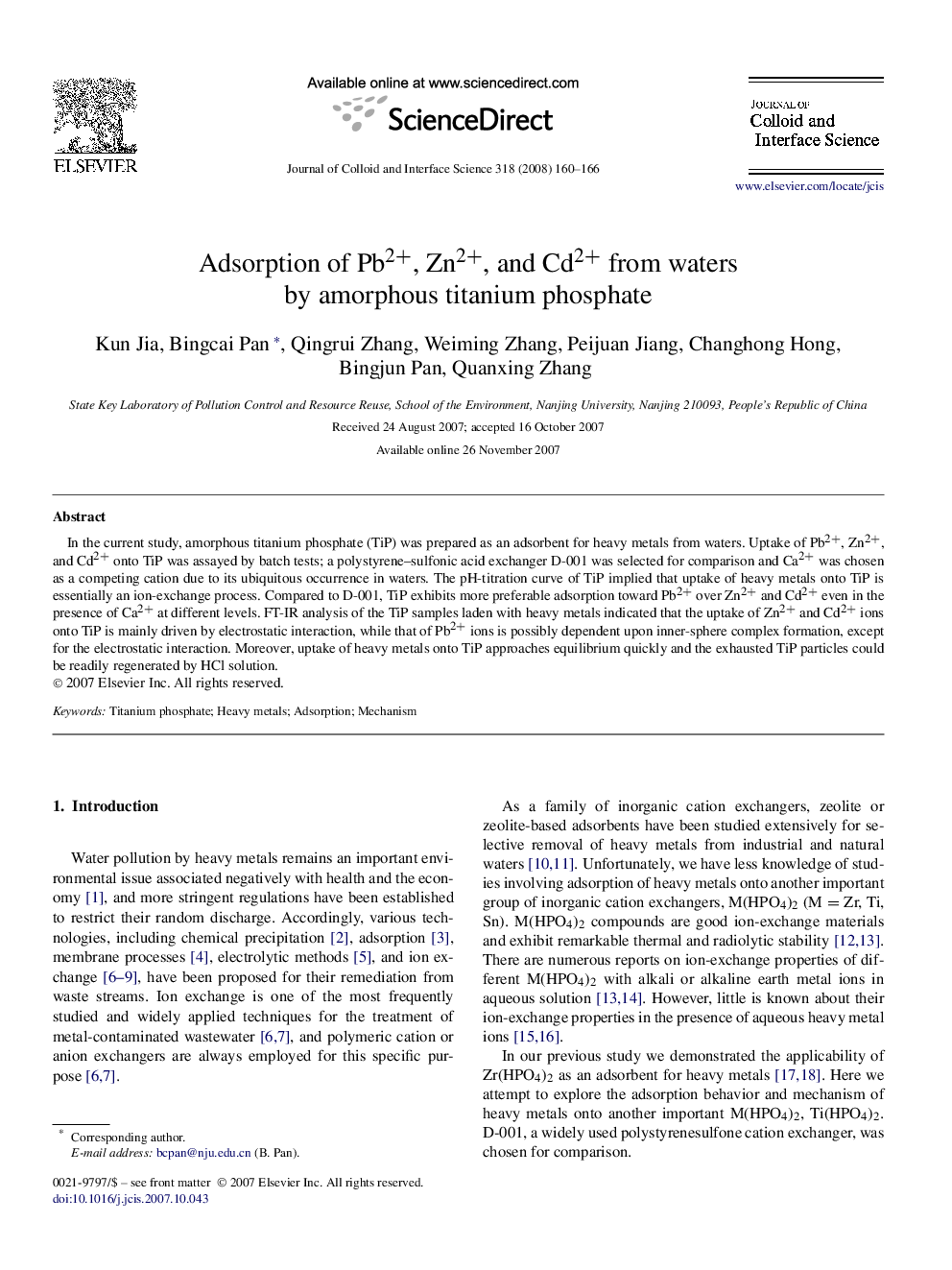| Article ID | Journal | Published Year | Pages | File Type |
|---|---|---|---|---|
| 611356 | Journal of Colloid and Interface Science | 2008 | 7 Pages |
In the current study, amorphous titanium phosphate (TiP) was prepared as an adsorbent for heavy metals from waters. Uptake of Pb2+, Zn2+, and Cd2+ onto TiP was assayed by batch tests; a polystyrene–sulfonic acid exchanger D-001 was selected for comparison and Ca2+ was chosen as a competing cation due to its ubiquitous occurrence in waters. The pH-titration curve of TiP implied that uptake of heavy metals onto TiP is essentially an ion-exchange process. Compared to D-001, TiP exhibits more preferable adsorption toward Pb2+ over Zn2+ and Cd2+ even in the presence of Ca2+ at different levels. FT-IR analysis of the TiP samples laden with heavy metals indicated that the uptake of Zn2+ and Cd2+ ions onto TiP is mainly driven by electrostatic interaction, while that of Pb2+ ions is possibly dependent upon inner-sphere complex formation, except for the electrostatic interaction. Moreover, uptake of heavy metals onto TiP approaches equilibrium quickly and the exhausted TiP particles could be readily regenerated by HCl solution.
Graphical abstractAdsorption of three heavy metals onto amorphous titanium phosphate was examined by batch tests and the corresponding mechanism was further explored by FT-IR analysis.Figure optionsDownload full-size imageDownload as PowerPoint slide
